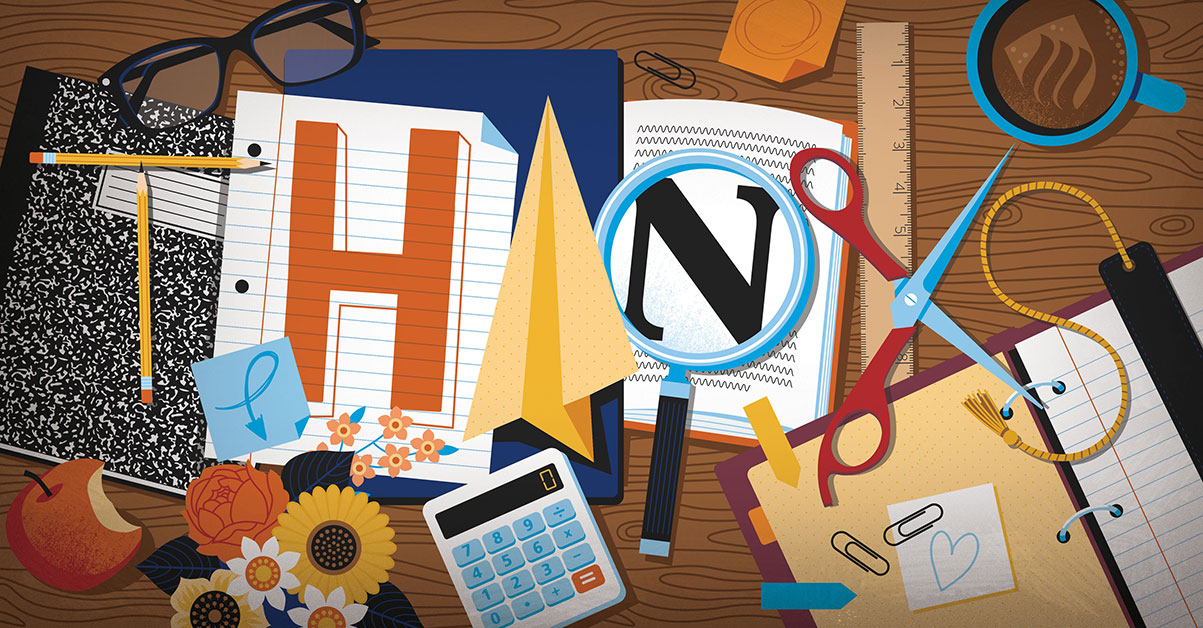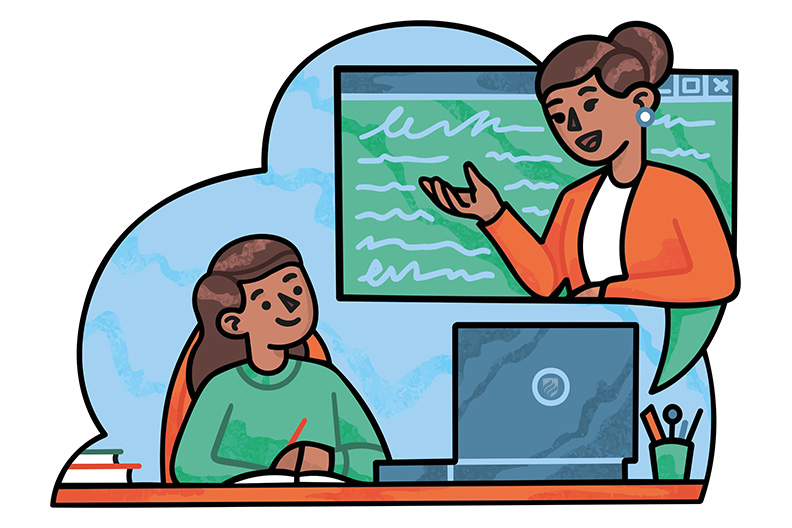How to Thank a Teacher
CHALKING THE LINE | BY DEBRA MEYER | 7 MIN READ

Approaching this Thanksgiving season in the United States, there is a lot to be thankful for and as much to be hopeful for.
Last Thanksgiving and this upcoming one have been enveloped by the unknown—with just-out-of-reach plans for a “back-to-normal” Thanksgiving filled with friends and family in large, indoor group gatherings, without the worry of a pandemic virus. Forgotten in our rush to “return to normal” are the reasons we have these celebrations in the first place. Thanksgiving is a celebration of the harvest and of blessings throughout the year. Key among these thanks should be all the people who selflessly served throughout the pandemic.
That is why this blog is about “How to Thank a Teacher,” especially as these educators navigate a third school year impacted by COVID-19.
In the spring of 2020, teachers were called on to quickly change to online learning and connect with students in an emergency situation. In the 2020-2021 school year, teachers had to navigate myriad changing health guidelines and school schedules. Everyone was hoping this year would be more consistent, but the Delta variant’s higher transmissibility and the return to school put many children and adolescents at the center of the pandemic storm.
Schools, depending on their geographic location, have fared better this year. Teachers are exhausted, while remaining hopeful. Teaching is a profession with intense emotional labor. Emotional labor is common in many professions where the job requires constant care of the needs of others and the expectation of keeping a lot of people happy. This emotional labor often results in hiding personal emotions and experiencing high levels of stress and burnout.
Not surprisingly, the stress from emotional labor during the pandemic brought many teachers to a breaking point.
We need to thank teachers because they are helping our children and youth navigate the pandemic. Being back in school also is helping our society, especially parents, find a path forward.
Meanwhile, teachers have stayed front and center in the pandemic. Although there have been media reports of teachers thinking about leaving the profession—as well as new teachers reconsidering entering it—a pandemic exit has not happened.
Thank a teacher for caring to show up. Before the pandemic began, there was already a teacher shortage, a large group of baby boom teachers were nearing retirement, and schools were having difficulty retaining teachers.
Teachers who are teaching through the pandemic remind us how teaching is a caring profession that puts students first. Teachers know how important it is for students to be back in school for academic and social emotional reasons. And they have shown us this through their actions.
Therefore, this holiday season, consider three important actions you could easily take in thanking the teachers in your lives.
Thank Them with Kindness
Ask any teacher what was the most meaningful “gift” they’ve ever received and it will probably be a “thank you.” It might be a letter or email from a family member telling them how much of a difference the teacher made in a child’s learning, or a handwritten note from a student. Some of us cherish these keepsakes for decades. They are tucked inside our desks and books, pulled out and read whenever we need to renew our dedication.
Kindness comes in many forms—a smile, a heartfelt “thank you,” or a written note, email, or text. Quotes about kindness are everywhere, but the act of kindness requires an interaction. Kindness is powerful in the smallest doses. A brief mention of appreciation during a school interaction or a quick note attached to homework can be powerful acts of kindness.
And kindness should not be random. Let it be consistent and heartfelt. Give a teacher a year of kindness by making the commitment to regularly interacting with kindness to all the teachers in your life.
Thank Them with Patience
Patience is another way to thank a teacher. Teachers have incredibly busy days with little time to take a minute for themselves. From the moment they walk in the school door until they exit, teachers are “on.” Expectations that they can immediately return messages or readily add another “to do” to their lists are not only unrealistic, but they can be unkind.
Patience is a key emotional skill in teaching. When teachers are patient, they make better-informed decisions and respond with more calmness and empathy. Patience helps teachers sustain emotional well-being throughout the ever-challenging and unpredictable school day. When teachers receive patience from others, they can provide a more positive learning experience for students.
Thanking a teacher with patience means interacting in ways that assume the best—accepting that mistakes are common—especially amid pandemic-driven conditions in P-12 classrooms.
To thank a teacher with patience is to carefully think about requests, especially last-minute ones, without jumping to conclusions. Consider showing patience by asking questions instead of making requests, and by not demanding immediate responses. When there is a problem at school, avoid making assumptions, get all the facts, and consider alternate pathways for solving the problem. Patience is a gift that keeps on giving.
Thank Them with Respect
Thanking a teacher with respect, in addition to acts of kindness and patience, expands appreciation to the entire profession.
Respecting teaching means advocating for and supporting better working conditions and professional growth for educators. Teaching in many parts of the world, and especially in the United States, is not a highly respected profession. As a recent report found, “most people underestimate how many hours teachers work, and how much they’re paid.” If this workload was underestimated prior to the pandemic, it is inestimable in today’s climate.
How are teachers shown respect? They are given choice and voice in their teaching and professional decisions. In the spring of 2020, several authors speculated that the rapid move to online learning would promote an increased appreciation of teachers. However, a true show of respect for teachers would be to include them in the high-level decisions being made that impact their students’ learning, their teaching, and their professional growth.
Thanking a teacher by showing respect is complex and requires commitment. Respect means showing teachers that their knowledge and skills are valued. Respect can be shown through interactions in which teachers or teaching are discussed, in advocacy for teachers’ salaries and benefits, and making sure that teachers have the professional development and resources they need.
Respecting a teacher is more than appreciation, it is valuing their time and professional expertise. Teachers feel respected when they are listened to, when they are asked for their professional advice and it is followed, and when they can use their professional expertise to make a difference.
Today’s educators are experiencing huge upheavals in their profession. Everything has changed, from physical classroom spaces and school routines to the selection of instructional content, schedules, and available resources.
But they are hopeful, as shown in their staying power.
So, between now and the end of the school year (not just during the holidays), consider thanking a teacher by adopting three simple goals and acting on them whenever possible:
- Be intentionally kind in person or in writing, and involve your child and other families, as well as the larger community, in these acts of kindness.
- Be patient and show understanding of the complexity and time demands of teaching. Give grace.
- Advocate for teachers in ways that honor their professional knowledge and skills as being among the most important in our society. Counter the anti-educator talk by asking questions and elevating teachers so they can do their best work every day with our students.
Become a Teacher Leader at Elmhurst University
Keep up to date with the latest teaching practices while earning a master’s degree at Elmhurst University. Our M.Ed. in Teacher Leadership program is designed to make you a more effective teacher—the kind others turn to for solutions.
Learn more today. Just fill in the form below!







Leave a Reply